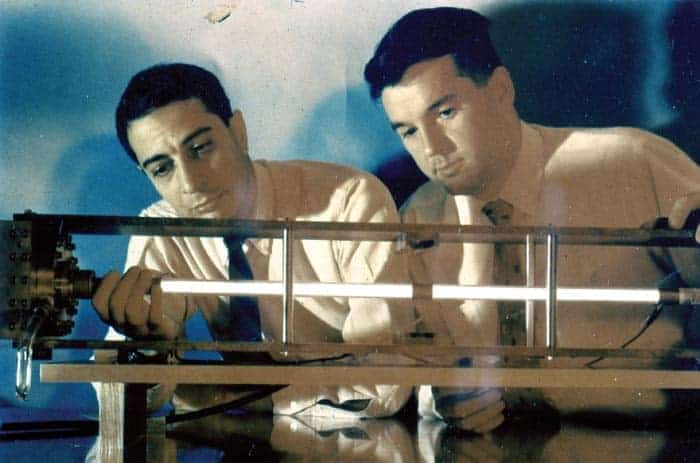The cosmologist Arno Penzias, who discovered the cosmic microwave background (CMB) with Robert Wilson, died on 22 January at the age of 90. He shared a half of the 1978 Nobel Prize for Physics with Wilson, with the other half awarded to Pyotr Kapitsa for his work in low-temperature physics.
Penzias was born in Munich, Germany, on 26 April 1933. At the age of six, Penzias and his family fled Nazi Germany, first to England before settling in New York in 1940. In 1954 Penzias graduated in physics from the City College of New York before serving as a radar officer in the US Army Signal Corps until 1956.
He then moved to Columbia University’s radiation laboratory working on microwave physics, earning a PhD in 1962 under the guidance of maser inventor Charles Townes.
Penzias then took a position at Bell Labs, New Jersey, developing microwave receivers for radio astronomy. There he worked with Wilson on a 6 m-diameter horn-reflector antenna with a 7 cm ultra-noise receiver. In 1964 the pair came across an excess source of radiation at 3 K that they could not eliminate.
Initially, they thought the hiss of radio waves at a wavelength of 7.35 cm had a terrestrial origin, given that it was approximately uniform in all directions on the sky. They even famously wondered if it was caused by pigeon excrement on the antenna.

James Peebles: a life in cosmology
In fact, what they had stumbled upon was the cosmic microwave background radiation, which had first predicted been by cosmologists Ralph Alpher and Robert Herman in the late 1940s.
Penzias and Wilson published their experimental findings in the Astrophysical Journal (142 419) alongside a paper by Robert Dicke (142 414), who had earlier calculated that the universe should be filled with a relic blackbody radiation at a minimum temperature of 10 K. Dicke interpreted the noise that Penzias and Wilson had measured as a signature of the CMB.
A hot, dense state
At the time there were two main competing theories about the universe. The �steady-state theory†stated that the universe is constantly expanding but with a fixed density. Then there was the �Big-Bang†theory, which envisioned the universe beginning at a single point and then expanding and stretching as it grows.
The discovery of the CMB provided the first direct evidence that the universe began in a hot Big Bang. The CMB was later found to have a temperature close to a blackbody of 2.7K and theorists realized that the low temperature is the result of the expansion of the universe.

What made Bell Labs special?
Penzias and Wilson shared the 1978 Nobel Prize for Physics for the discovery and since then the CMB has provided researchers with swathes of information about the universe, including the discovery in the 1970s that the CMB is not purely isotropic, but has tiny anisotropies.
The CMB has since been measured in unprecedented detail by ground and space probes. These include NASA’s Cosmic Background Explorer, which launched in 1989, and the Wilkinson Microwave Anisotropy Probe that took off in 2001.
After a 37-year career at Bell Labs, including spells as research director and chief scientist, Penzias retired in 1998. Having written two books about technology and business, he then joined the venture capital firm New Enterprise Associates.
As well as the Nobel prize, Penzias was awarded the Henry Draper Medal in 1977 from the US National Academy of Sciences and the American Physical Society’s George Pake Prize in 1990.

